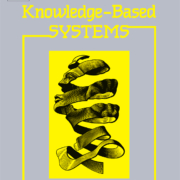Research paper accepted by Knowledge-Based Systems
The poor explainability of deep learning models has hindered their adoption in safety and quality-critical applications. This paper focuses on image classification models and aims to enhance the explainability of deep learning models through the development of an uncertainty quantification-based framework. The proposed methodology consists of three major steps. In the first step, we adopt dropout-based Bayesian neural network to characterize the structure and parameter uncertainty inherent in deep learning models, propagate and represent such uncertainties to the model prediction as a distribution. Next, we employ entropy as a quantitative indicator to measure the uncertainty in model prediction, and develop an Empirical Cumulative Distribution Function (ECDF)-based approach to determine an appropriate threshold value for the purpose of deciding when to accept or reject the model prediction. Secondly, in the cases with high model prediction uncertainty, we combine the prediction difference analysis (PDA) approach with dropout-based Bayesian neural network to quantify the uncertainty in pixel-wise feature importance, and identify the locations in the input image that highly correlate with the model prediction uncertainty. In the third step, we develop a robustness-based design optimization formulation to enhance the relevance between input features and model prediction, and leverage a differential evolution approach to optimize the pixels in the input image with high uncertainty in feature importance. Experimental studies in MNIST and CIFAR-10 image classifications are included to demonstrate the effectiveness of the proposed approach in increasing the explainability of deep learning models.
Research paper accepted by Journal of Mechanical Design
Identifying a reliable path in uncertain environments is essential for designing reliable off-road autonomous ground vehicles (AGV) considering post-design operations. This paper presents a novel bio-inspired approach for model-based multi-vehicle mission planning under uncertainty for off-road AGVs subjected to mobility reliability constraints in dynamic environments. A physics-based vehicle dynamics simulation model is first employed to predict vehicle mobility (i.e., maximum attainable speed) for any given terrain and soil conditions. Based on physics-based simulations, the vehicle state mobility reliability in operation is then analyzed using an adaptive surrogate modeling method to overcome the computational challenges in mobility reliability analysis by adaptively constructing a surrogate. Subsequently, a bio-inspired approach called Physarum-based algorithm is used in conjunction with a navigation mesh to identify an optimal path satisfying a specific mobility reliability requirement. The developed Physarum-based framework is applied to reliability-based path planning for both a single-vehicle and multiple-vehicle scenarios. A case study is used to demonstrate the efficacy of the proposed methods and algorithms. The results show that the proposed framework can effectively identify optimal paths for both scenarios of a single and multiple vehicles. The required computational time is less than the widely used Dijkstra-based method.
ML model in production at FedEx Express
FedEx Express handles more than 6.5 million packages everyday in nearly 220 countries and regions. Customers expect timely and accurate information on their package deliveries. To address customers demand, I have worked with teams across different departments (e.g., IT, market) and colleagues in the Operations Research and Spatial Analytics (ORSA) to develop and deploy a machine learning-based solution to produce customized expected delivery time windows for millions of packages every day. I am proud that the deployed ML model has been in production with reliable performance since March, 2021.




